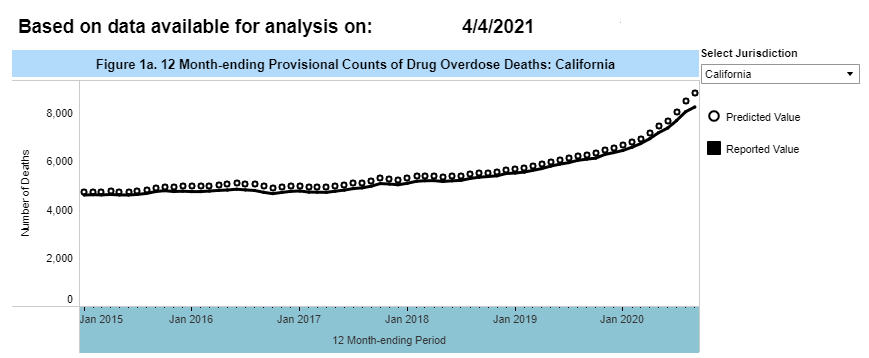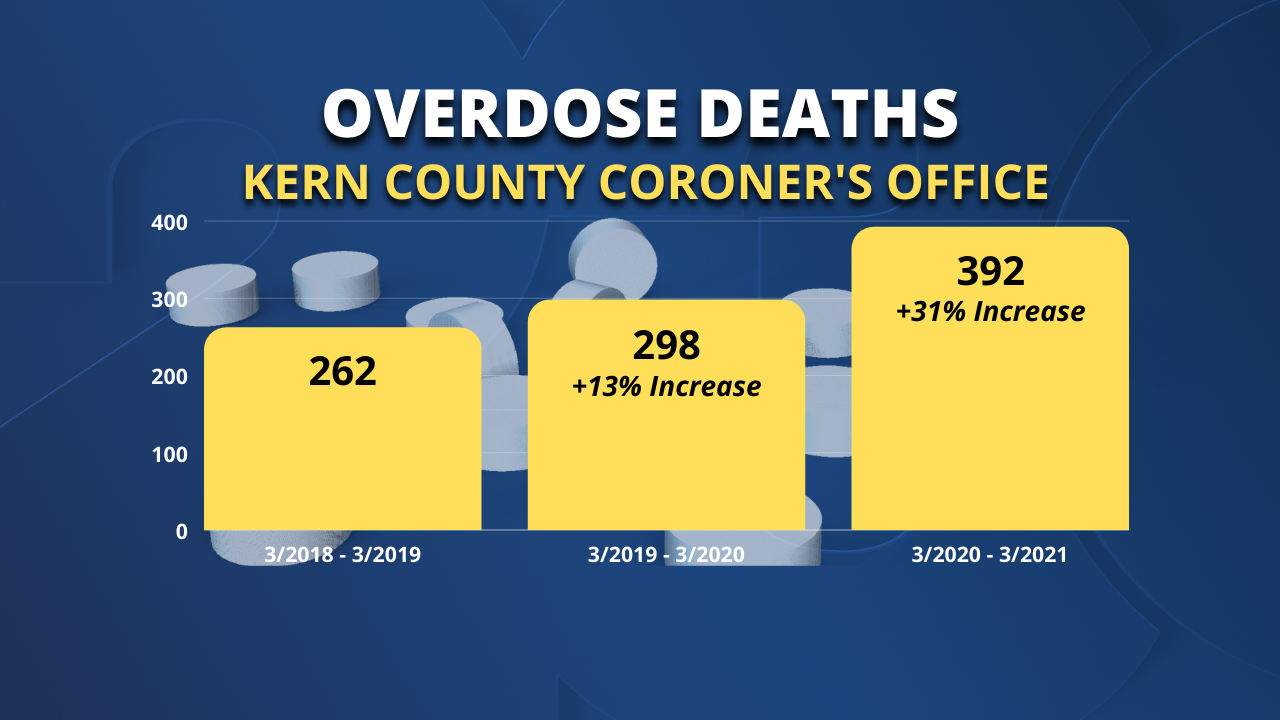BAKERSFIELD, Calif. (KERO) — 2020 was a difficult year for many people but it proved especially hard for recovering addicts. In Kern County, drug overdoses took a massive jump.

Overall the United States saw a 28 percent increase in drug overdoses during the pandemic. Data collected shows an increase from mid-2019 to mid-2020 and accounts for parts of that year where people were most isolated due to COVID-19 restrictions.

During the same time, California saw a 40 percent increase in overdoses. Louisiana saw the biggest spike with a 54 percent increase in related deaths.
It’s a trend that 23ABC has followed since the beginning of the pandemic: local addiction rehab facilities seeing an increase in the number of people needing help. Overdose deaths are a growing problem in Kern County.
According to the Kern County Coroner’s Office, there was a 30 percent increase in overdose deaths in the first year of the pandemic compared to the year prior. The statistics are grim, and for some, not surprising.
For more than a year, Action Rehab CEO Cary Quashen has spoken of an epidemic that’s been running parallel to the COVID pandemic: the opioid crisis. As the nation shut down last spring, it created a vulnerable environment for those who struggle with addiction.
“The statistics don’t surprise me at all about Kern County’s deal because nationally, we’re in the midst of a crisis,” explained Quashen. “People’s anxiety levels are off the chart. People are lonely, bored, domestic violence is up. So people are running for escapes.”

And that escape may have proved costly for some. According to statistics from the Kern County Coroner’s Office, 392 overdose deaths were reported between March 1, 2020, and March 1, 2021. That’s a 31-percent increase over the year prior, which saw 298 deaths. And that was a 13-percent increase over the year before that.
As many COVID restrictions ease up, Quashen says the problem persists: “People are a little bit happier, and anxiety is becoming less, but the substance abuse crisis still has not changed.”
The Kern County Sheriff's Office says the most recent year's overdose numbers may still rise because deaths aren't reported until cases are closed. And some overdose cases may still be open.
“People were kind of afraid to go into treatment. So that’s changed,” said Quashen.

SOURCE: CDC Understanding the Epidemic
Quashen says one positive thing of late is that Action Rehab's facilities - which are located in Kern, Los Angeles, and Ventura counties - are seeing people being more comfortable getting treatment in person. Virus fears kept many people away at first.
Officials say if you think you may need help, it’s worth reaching out.
“If you think that you’re having a problem with alcohol or opioids or pot or whatever the deal is -- if you think you have a problem, you do,” said Quashen.
Action Rehab’s 24-hour helpline number is 1-800-367-8336. They say even if they can’t help you with your specific need, they’ll help you get a hold of someone who can.

According to Quashen, alcohol, and heroin appear to be big concerns right now. But the biggest worry may be illegally manufactured Fentanyl, which can be dangerously potent and is becoming more and more common.
What is Fentanyl?
Pharmaceutical fentanyl is a synthetic opioid, approved for treating severe pain, typically advanced cancer pain.1 It is 50 to 100 times more potent than morphine. It is prescribed in the form of transdermal patches or lozenges and can be diverted for misuse and abuse in the United States. However, most recent cases of fentanyl-related harm, overdose, and death in the U.S. are linked to illegally made fentanyl. It is sold through illegal drug markets for its heroin-like effect. It is often mixed with heroin and/or cocaine as a combination product—with or without the user’s knowledge—to increase its euphoric effects.




